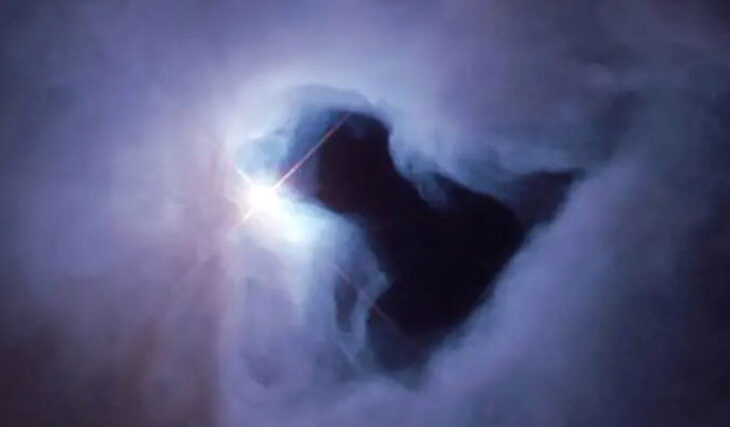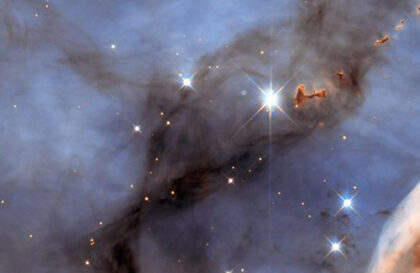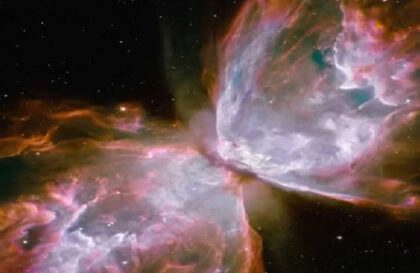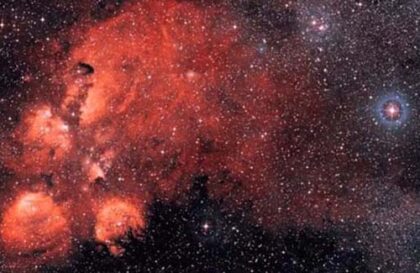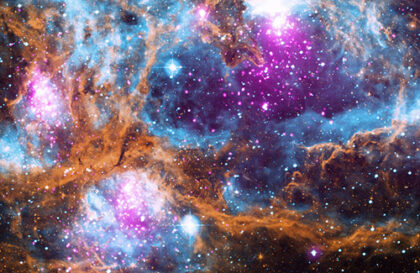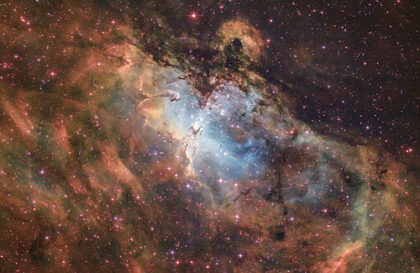The bright light in the nebula comes from a star that has appeared relatively recently and is slightly left of center. This star is included in astronomical registers under the name V380 Orionis. Its snow-white hue results from its high surface temperature, reaching approximately 10,000 degrees Celsius, almost twice the surface temperature of the Sun. The mass of this star is 3.5 times greater than that of the Sun. It is so young that it is still embraced by the cosmic shroud of residual material from which it formed, visible as the reflection nebula NGC 1999.
Just like the thick fog that shrouds the light of a street lamp, a reflection nebula sparkles, illuminated from within by the star’s light at its heart; the nebula itself does not emit visible light. This nebula made its mark in the astronomical annals due to the fact that a Herbig-Haro-type object was found in its vicinity for the first time, located in close proximity to a recent Hubble telescope image. Today, it is recognized that Herbig-Haro objects are gaseous jets emitted by newly formed stars.
NGC 1999 is a striking, dark, jet-black cloud visible near its core, below and to the right of the luminous star. This darkened mass is an example of so-called Bok globules, named after the late scientist Bart Bok of the University of Arizona.
A globule is a cool clump of gas, molecules, and stardust, thick enough to block the light that lies behind it. This cloud appears silhouetted against the glowing reflection nebula illuminated by the star V380 Orionis. Scientists believe that new stars may be born inside these Bok globules due to the gravitational compression of dust and gas.
Banner image: NGC 1999, a reflection nebula in the constellation Orion. Credit: NASA and The Hubble Heritage Team (STScI)
Image credit:
https://www.nasa.gov
